I came across strange results when using lme with repeated measures and varIdent. Any help with this will be very appreciated!
I am testing whether the 13C signal of leaves along a time series differs between 2 species (A and B). I am basically interested on the overall differences between species, not in specific time points.
Here is my dataset:
Block Species time X13C
1 B 2 0.775040865
2 B 2 0.343913792
3 B 2 0.381053614
1 A 2 0.427101597
2 A 2 0.097743662
3 A 2 0.748345826
1 B 24 0.416700446
2 B 24 0.230773558
3 B 24 0.681386484
1 A 24 0.334026511
2 A 24 0.866426406
3 A 24 0.606346215
1 B 48 0.263085491
2 B 48 0.083323709
3 B 48 0.534697801
1 A 48 0.30594443
2 A 48 0.024555489
3 A 48 0.790670392
1 B 96 0.158090804
2 B 96 0.254880689
3 B 96 0.082666799
1 A 96 0.139189281
2 A 96 0.300340119
3 A 96 0.233149535
1 B 192 0.055421148
2 B 192 0.082582155
3 B 192 0.136636735
1 A 192 0.03641637
2 A 192 0.06082544
3 A 192 0.126029308
I am applying the following model:
bulk<-lme(X13Catex ~ Species*time, random = ~1|Block/Species, method='REML', na.action=na.exclude, data=VacL, corAR1())
As there is heterogeneity in the residuals for time, I applied varIdent, which improved the model fits (AIC). The normalised residuals plots also looked good.
bulk.var<-lme(X13Catex ~ Species*time, random = ~1|Block/Species, method='REML', na.action=na.exclude, data=VacL, corAR1(), weights=varIdent(form=~1|time))
The thing is that with this code I get a significant p-value for Species, but looking at my data it does not seem that species differ at all... I think it is very strange to get such a low p-value, as error bars overlap at each time point and also at some time points A is greater than B and at some others the other way round.
> anova(bulk.var)
numDF denDF F-value p-value
(Intercept) 1 15 13.25772 0.0024
SpeciesCode 1 2 67.08281 0.0146
SamplingTime 4 15 4.42320 0.0147
SpeciesCode:SamplingTime 4 15 1.27659 0.3227
It happened again when I analysed other similar variables...
I wonder if a problem could be the low replication for each species at each sampling time (n = 3). Could it be that applying varIdent and a "relatively complex" model with such a low amount of replicates explains the significant p-value found? Any suggestions on how to deal with this?
Thank you!!

